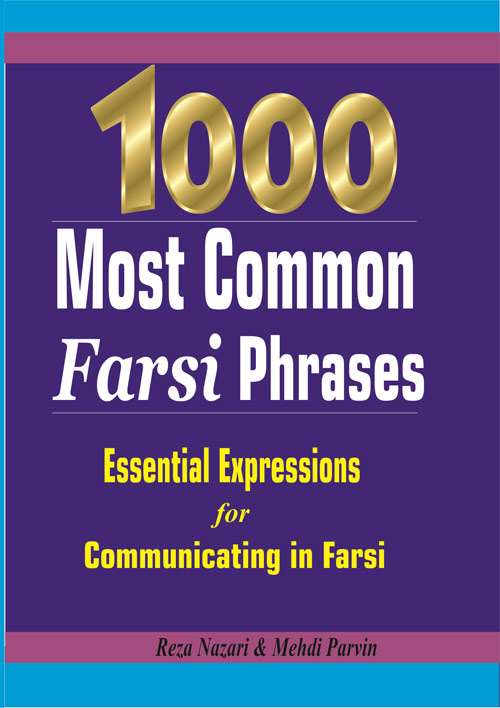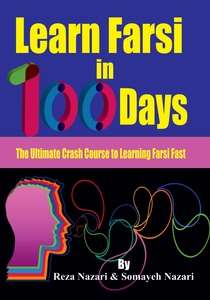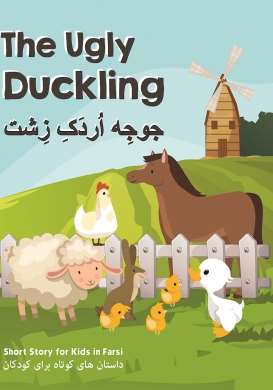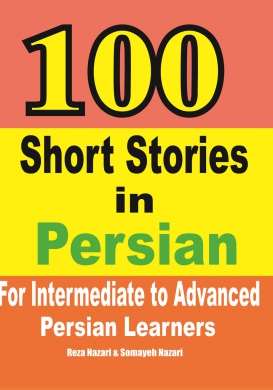
Introduction to the Persian Language
The Farsi language, also known as “Tajik” in Tajikistan and “Dari” in Afghanistan, has 62 million native speakers And 110 million non-native speakers
Best Farsi Learning Resource!
Farsi or Persian?
In the English language, we should always refer to the language of Iran as Persian. This is the English name. If you speak Persian, then you would refer to the language as Farsi.

Is Persian Hard to Learn?
If you have never studied any similar languages before, the Persian language might seem a little bit complicated and different from what you’re used to in the beginning because you have never had any experience with reading the Farsi language script. However, the moment you begin to study the Farsi alphabet, you will find many similarities with European languages. That’s because the Persian language is also an Indo-European language, which means, that it shares the same origin as most European languages, making Farsi grammar relatively easy to study and understand.
Furthermore, you can also find some words in Farsi that share a common root with English or other European languages. Here are a few examples:
- Bad (English) = Bad (Persian)
- Star (English) = Setâreh (Persian)
- Mother (English) = Mâdar (Persian)
- Padre (Spanish) = Pedar (Persian)
- Tochter (German) = Dokhtar (Persian) = Daughter (English)
- Name (English) = Nâm (Persian) = Nâm (Dutch)
Many words of Farsi origin have also made their way into the English language, some of the most common examples are:
Bazaar from Farsi بازار bâzâr meaning “market”.
Candy from Old French sucre candi, derived from Arabic قند qandi meaning “candied” and originated from Farsi قند qand, meaning “sugar.”
Caravan from Italian caravana, carovana, originated from Farsi کاروان kâravân, meaning a company of travelers, pilgrims, or merchants on a long journey through the desert or hostile regions.
Checkmate from Middle French eschec mat, originated from Farsi شاه مات shâh mât, meaning “the King (Shâh) is dead”.
Khaki from Hindustani and Urdu ख़ाकी/خاکی khaki meaning “made from soil”, “dusty” or “of the colour of soil”, originated from Farsi خاک khâk meaning “soil”.
Kiosk from Farsi کوشک kushk meaning “palace, portico, pavilion” or from Middle Persian gōšak “corner”.
Rank from Farsi رنگ rang meaning “color”, as the Sassanid army was ranked and dressed by color.
Typhoon from Chinese 大风/大風, Hindi दफुं, Arabic طوفان, and Ancient Greek τυφῶν; ultimately from Farsi طوفان tufân.
So as you can see, you already knew some Farsi words without even knowing it! Here, you can find the complete list of words with Farsi origin.

Persian Alphabet
آ ب پ ت ث ج چ ح خ د ذ ر ز ژ س ش ص ض ط ظ ع غ ف ق ک گ ل م ن و ه ی
Most of the Persian letters are similar to that of the Arabic alphabet, with the exception of these four letters:
چ پ ژ گ
Reading Farsi is actually easier than Arabic. Although the Farsi and Arabic alphabets share many similar letters, not all the letters are pronounced exactly the same as in Arabic.
For example ( ث , ص , س ) all sound different in the Arabic language. But in Farsi, they are all pronounced like the English “s” sound as in sand.
Another example, ( ز , ض , ذ , ظ ) these four letters each have a different sound in Arabic, while in Farsi they are almost all pronounced as the “z” sound as in zoo.
Knowing that some letters are written differently but still sound the same, will help you to learn the Farsi alphabet faster. But even if the letters sound the same, you still need to write the words correctly.
That’s why the Farsi language sounds softer compared to Standard Arabic, or the Kurdish language. The Persian language is one of the most romantic languages in the world.
One last example of how Persian sounds softer is the fact that both Arabic and Farsi language share the letter (ع) in their alphabet, while in Arabic it’s pronounced as “ayn” the sound comes from the lowest part of the throat, while in the Persian language the letter sounds much softer.
We have an example here. عماد ‘Emâd, is an Arabic name, we will show you the pronunciation of this name in both Persian and in Arabic so you can hear the difference.
عماد in Arabic:
عماد in Persian:
Why Learn Persian?
Learning Farsi is a very rewarding experience for two main reasons.
One, although the Farsi language and Arabic language are from completely different language families, the Persian language has thousands of words derived from Arabic vocabulary so if you decide to learn the Arabic language one day after learning Persian, you would already know a lot of words. So by learning Farsi, you would essentially be learning some Arabic at the same time!
Below are some examples of Arabic words in Farsi:
| ENGLISH | PERSIAN | ARABIC |
| Island | جزیره jazire | جزيرة jazira |
| Book | كتاب ketâb | كتاب kitâb |
| Notebook | دفتر daftar | دفتر daftar |
| School | مدرسه madrese | مدرسة madrasa |
| Government | حکومت hokumat | حكومة hukuma |
| Animal | حیوان heyvân | حيوان hayawân |
| Speed | سرعت sor’at | سرعة sor’a |
| Science | علم elm | علم ilm |
| Desert | صحرا sahrâ | صحراء sahrâ |
Linguistically, Farsi and Kurdish are also sister languages and are both in the Iranian branch, much like how English and German can be considered sister languages in the Germanic branch. The Kurdish languages belong to the Iranian branch of the Indo-European family, so Farsi and Kurdish are very similar languages.
Not only that, but according to Wikipedia, 21.7% of basic Urdu languages are of Farsi origin, and 29.9% of the words are of Arabic origin (many Arabic words are used in the Farsi language as well).
Reason number two to learn Persian is, Iran is a so beautiful country. Iran has a long and rich history with a very diverse and unique culture.
Learning Farsi will allow you to gain a new perspective about life in the Middle East. Besides, Iranian people are very friendly and hospitable toward foreigners, so they would be more than happy to help you with learning Farsi.
Iranian movies are famous throughout the Middle East, and also most of the greatest movies and TV series in the Middle East were made in Iran. But it wasn’t until only recently that Iranian movies started to gain more international attention after Iranian movies won an Oscar for Best Foreign Language Film.
One of the best movies that became very popular internationally is The Colour of Paradise (رنگ خدا) which first came out in 1999.

Iran is also famous for dubbing almost every single Hollywood or famous movies around the world into Farsi, and their dubbing skill is without a doubt one of the best in the world.
Learning Persian Through Songs
Listening to Persian songs is also an excellent way to practice your listening, learn new Persian words and phrases, and enjoy the beauty of the Farsi language and music at the same time.
You can listen to this song, and try to sing along with the lyrics, just to give you an idea of what Farsi sounds like.
The tempo of this music is slow enough for you to be able to sing along, and the singer’s voice is very clean and clear.
Vaghti daro mohkam basti
وقتی درُ محکم بستی
Tâ khode sob gerye kardam
تا خود صبح گریه کردم
khâterât ro dore kardam
خاطرات رو دوره کردم
Kâshki mizâshti bargardam
کاشکی میذاشتی برگردم
Mano tanhâiye shab
منو تنهایی شب
Mano bihâliyo tab
منو بی حالی و تب
Bâ ye khodkâr ru be shahr
با یه خودکار رو به شهر
Bidâram man kolle shab
بیدارم من کل شب
Man ke âdame badi nabudam
من که آدم بدی نبودم
Summary
- The Farsi language is an Indo-European language.
- Farsi has also influenced many languages such as Urdu. 21.7% of basic words in Urdu have Farsi origin.
- Iran is a very beautiful country with a very long and rich history. Iranian films are very famous all across the Middle East.
- There are many good Iranian films, cartoons, and Persian music to help you practice your Farsi and inspire you to keep learning.
Special Offers
by: Learn Persian Online Team about (category: Blog)

















What people say about "Why You Should Learn the Persian Language"?
No one replied yet.